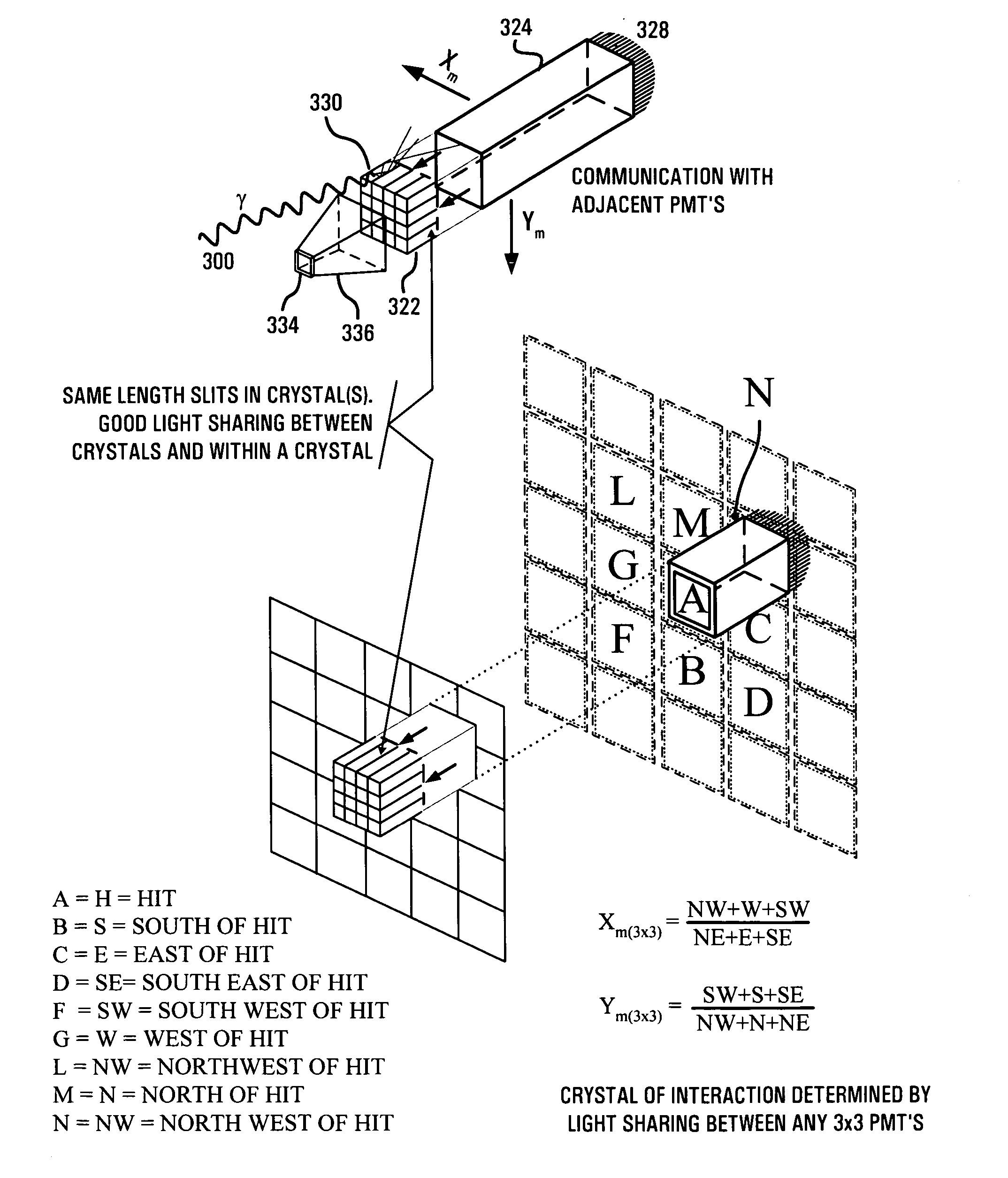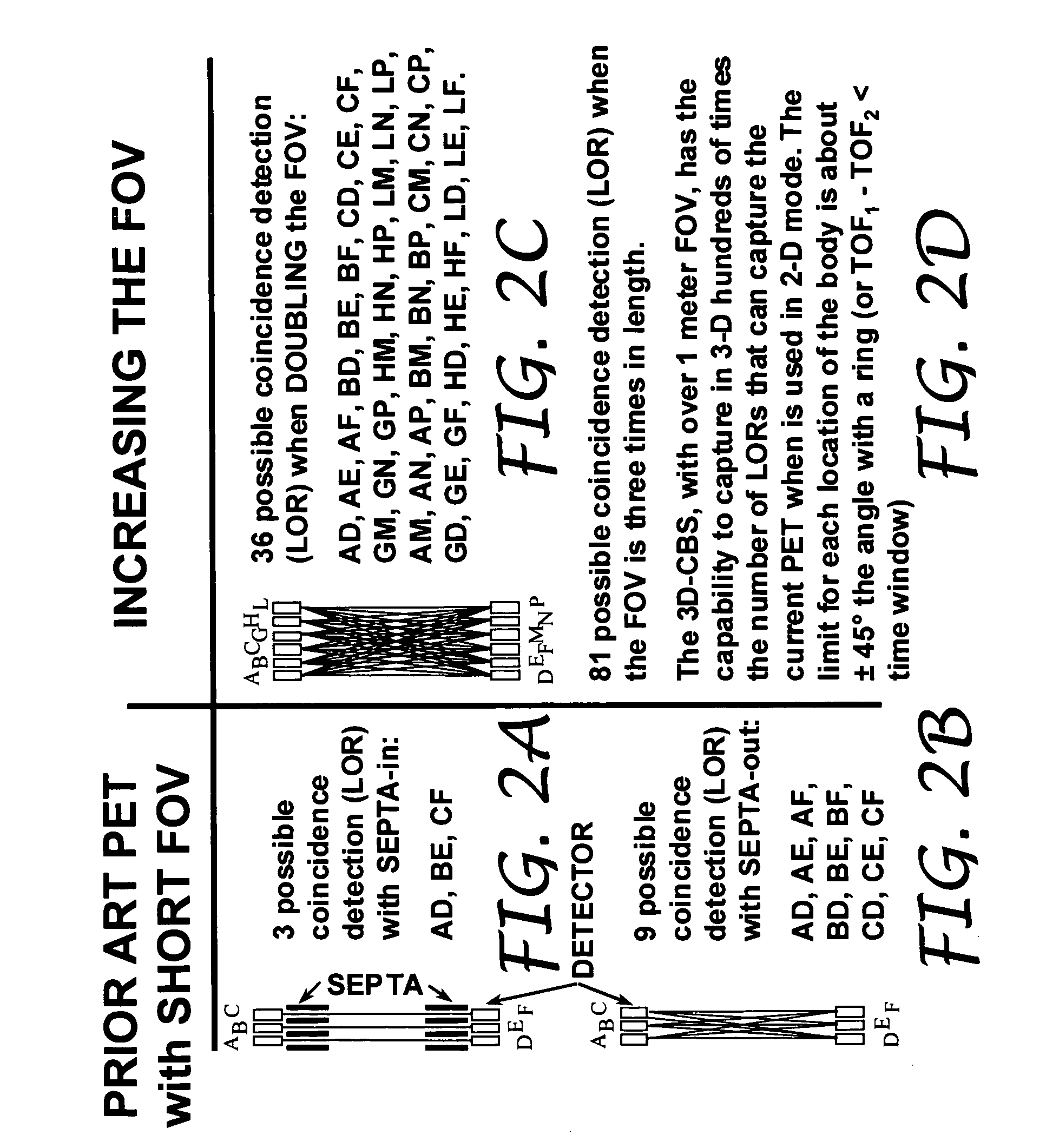Method and apparatus for improving pet detectors
a technology of detectors and pet bodies, applied in tomography, instruments, x/gamma/cosmic radiation measurement, etc., can solve problems such as sticking differences between disciplines, and achieve the effects of high programmable computing capability, high spatial resolution information accuracy, and accurate total energy measuremen
- Summary
- Abstract
- Description
- Claims
- Application Information
AI Technical Summary
Benefits of technology
Problems solved by technology
Method used
Image
Examples
Embodiment Construction
[0044] The present invention, referred to internally herein as the three-dimensional complete body screening (3D-CBS) compared to the current Positron Emission Tomography (PET), encompasses a plurality of inventions disclosed herein and in related patents and co-pending patent applications identified throughout this disclosure. The scope of the corpus of inventions that comprises the 3D-CBS may not be fully appreciated without carefully examining the 3D-CBS from various perspectives which are important for medical professions that engage in human body scanning. Therefore, prior to discussing the exemplary embodiments of the present invention, the differences between the 3D-CBS system of inventions will be discussed with respect to a PET known in the prior art. Here, it should be understood that, although the 3D-CBS system will be discussed with regard to implementation in an exemplary embodiment of a PET, those of ordinary skill in the art will appreciate that the disclosed inventio...
PUM
 Login to View More
Login to View More Abstract
Description
Claims
Application Information
 Login to View More
Login to View More - R&D
- Intellectual Property
- Life Sciences
- Materials
- Tech Scout
- Unparalleled Data Quality
- Higher Quality Content
- 60% Fewer Hallucinations
Browse by: Latest US Patents, China's latest patents, Technical Efficacy Thesaurus, Application Domain, Technology Topic, Popular Technical Reports.
© 2025 PatSnap. All rights reserved.Legal|Privacy policy|Modern Slavery Act Transparency Statement|Sitemap|About US| Contact US: help@patsnap.com



